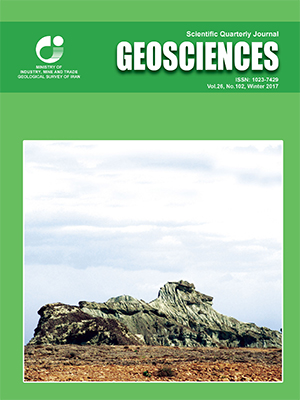Document Type : Original Research Paper
Authors
1 Ph.D. Student, Department of Geology, College of Sciences, Shahid Bahonar University of Kerman, Kerman, Iran
2 Assistant Professor, Department of Geology, College of Sciences, Shahid Bahonar University of Kerman, Kerman, Iran
3 Professor, Department of Geology, College of Sciences, Shahid Bahonar University of Kerman, Kerman, Iran
Abstract
Khunrang intrusive complex, as a one of the largest complexes in the southern part of the Sanandaj-Sirjan zone, is located at northwest of Jiroft, in Kerman province. The complex mainly consists of acidic-intermediate rocks such as diorite, quartzdiorite, tonalite, granodiorite, and granite with subordinate amounts of mafic members such as hornblende gabbro and microgabbro. Field studies together with mineralogical and geochemical evidence show that the Khunrang intrusive complex belongs to calc-alkaline series and its felsic members are metaluminous to weakly peraluminous which display features typical of I-type granites. On the primitive mantle-normalized spider diagrams, all mafic and felsic samples are enriched in LILE (such as Rb, Cs and K) and depleted in Ti, Ta and Nb which is a main characteristic of subduction-related magmas. Based on geochemical data, the mafic rocks seems to be formed by melting of metasomatised mantle wedge; whereas felsic rocks are formed by melting of lower crust metabasic rocks as a result of the injection of mantle derived mafic magmas. It can be concluded that the Khunrang intrusive complex was formed in a volcanic arc setting due to subduction of the Neotethys oceanic crust beneath the Central Iranian Micro-continent in the Middle-Jurassic time.
Keywords

